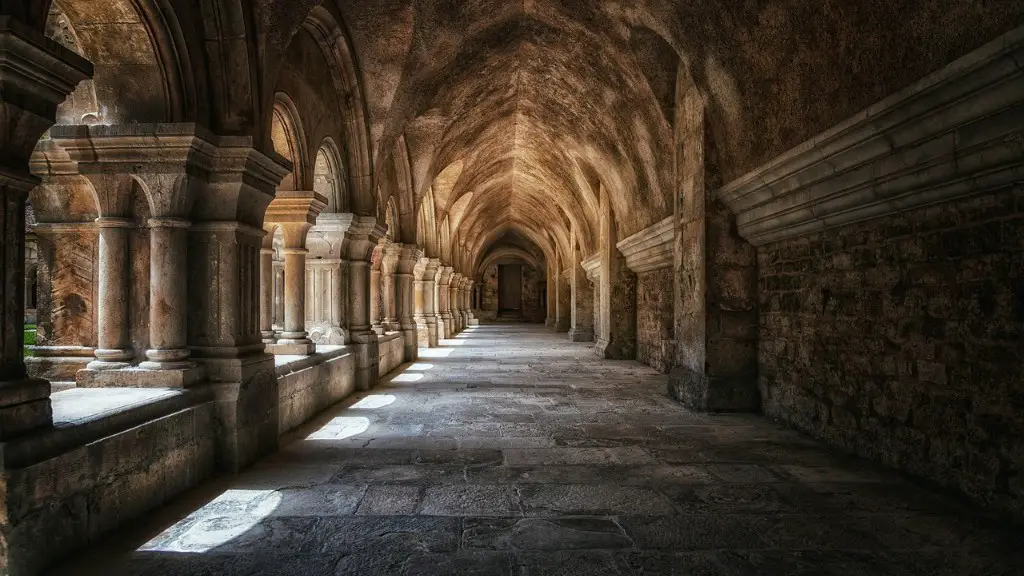The church has been an important influence in art and architecture for centuries. From the moment it was established, the church has used its influence to create works of art and architecture that are as diverse as its teachings. From the ornate Renaissance churches to the modern day styles, the influence of the church can be seen in every corner of the world. The impact the church has had on art and architecture is far-reaching and complex, and it is important to understand the ways in which it has shaped the art and architecture we see today.
When looking at ancient churches and religious monuments, some of the first elements that can be seen are the use of symbolism and religious iconography. These symbols are meant to communicate specific messages and beliefs to those who view them. They can often serve as reminders of the divine or be used to encourage humility and piety. In addition, many iconic works of art, such as Michelangelo’s Sistine Chapel or da Vinci’s Last Supper, are heavily inspired by religious artwork. The church has also had a significant impact on the use of space, as many churches throughout history were designed to make those inside feel closer to the divine.
The influence the church has had on art and architecture has also gone beyond just religious significance. Many early churches were designed with great attention to detail and craftsmanship, employing techniques such as stained glass, intricate carvings, and mosaics in their designs. This is an expression of the church’s faith in the power of art to bring individuals closer to God. At the same time, the church’s patronage of the arts has helped to promote culture in many regions and has even served as an important source of inspiration for artists and architects alike.
The influence of the church is also seen in the way many of today’s churches and other religious monuments are designed. From soaring spires to colorful mosaics, many churches have been designed as both works of art and places of worship. In addition, the church’s influence can be seen in the way these buildings are often used in the larger communities they serve. Some cities have even designated certain churches as landmarks, and many of them have gone on to become some of the most recognizable structures in their cities.
One of the most significant impacts the church has had on art and architecture is the way it has shaped its audience’s understanding of the world. By providing a space for individuals to be religious, the church has allowed for people to communicate with each other and form shared beliefs and values. Additionally, the church has served as a source of inspiration and creativity, providing a platform for individuals to express their beliefs in art and architecture.
In conclusion, the influence of the church on art and architecture is undeniable. From its earliest days, the church has used its influence to promote art, architecture, and the concept of divine worship. It has also been an important force in promoting culture by patronizing the arts, providing inspiration for works of art, and creating iconic structures that are recognized throughout the world. The church continues to be an important influence in the way art and architecture are created and used today, and its impact on our lives is sure to continue for many generations to come.
Secular And Religious Influences
The influence of the church on art and architecture has not only been in terms of promoting religious principles and faith, but it has also extended to secular influences as well. Churches, being so prominent in the societies they serve, have been key in promoting civic activity. Examples of this include the use of churches as public gathering places, or public meetings, or the promotion of civic pride through the use of church architecture. Additionally, the church’s patronage of the arts has helped to spread knowledge and understanding of different works of art and architecture, as well as inspiring new works of art and architecture.
The Renaissance And The Reformation
The influence of the church has been particularly significant during two major times in history. The first is the Renaissance, a period of European history that saw a resurgence of interest in classical art and architecture. During this time, the church played a major role in the revival of these art forms, with many of its iconic structures being directly inspired by classical structures. The second major period of influence was the Reformation, a religious and political movement that saw a return to traditional Christian beliefs and practices. During this time, the church embraced art and architecture as a way to spread its ideals and beliefs, and to propagate its teachings.
Modern Day Influence
The influence of the church on art and architecture is as strong now as it was centuries ago. In modern times, many churches use iconic works of art and architecture as a way to inspire their parishioners and engage the public. Additionally, many of the principles of the Renaissance and Reformation remain in practice today, such as utilizing stained glass windows and intricate stone carvings. The church continues to provide a platform for artists and architects to express their beliefs, providing a deep and meaningful connection between an individual artist and the beliefs of the church.
Conclusion
The influence of the church on art and architecture is undeniable, and many of its effects are still seen today. From the Renaissance to the Reformation, the church’s influence has reached all corners of the world, providing a source of inspiration and creative outlets for many artists and architects. Additionally, its role in promoting civic pride and in creating iconic structures will continue to be felt for generations to come.



